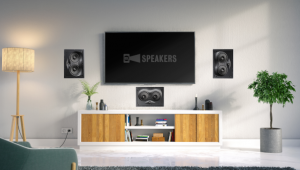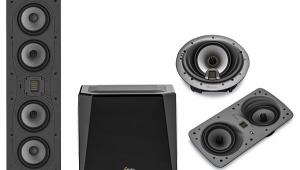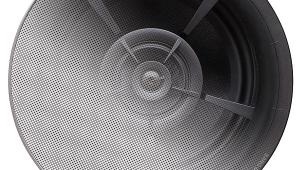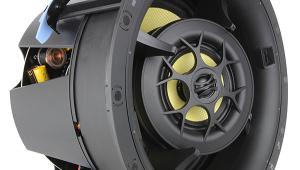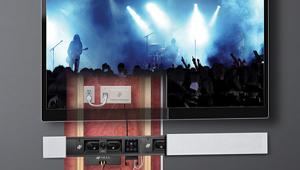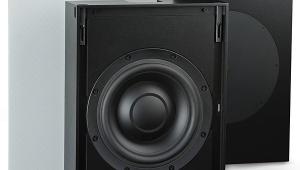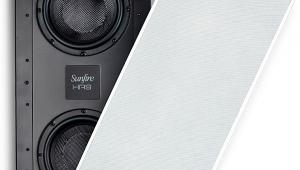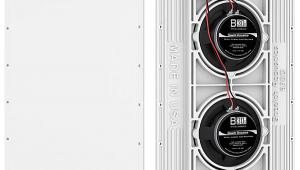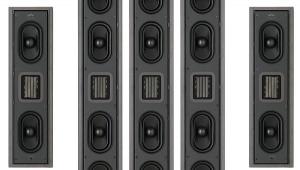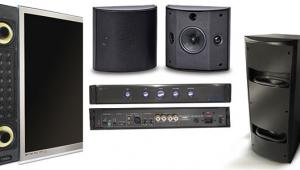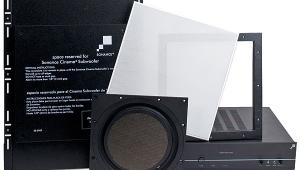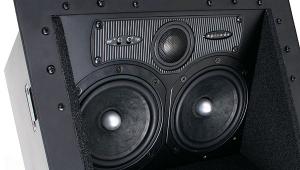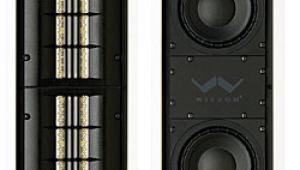Artison Masterpiece LCR-DM On-Wall Speaker System Page 2
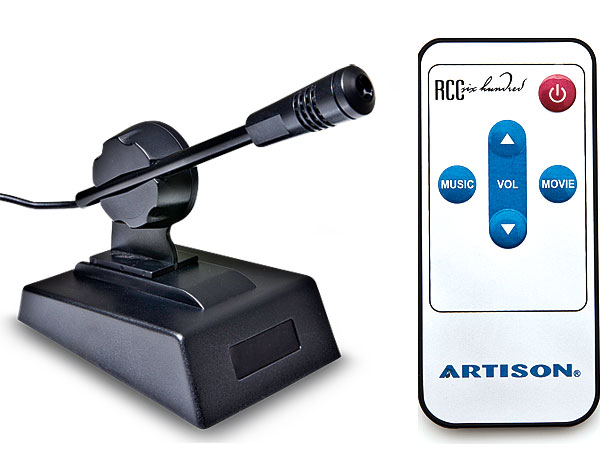
Spaced Out
It’s hard for me to conceive of a situation in which someone whose main interest was listening to two-channel music would have the compulsion that his high-performance speakers look like part of a flat-panel TV sitting on a cabinet (as my setup was). But if such a person existed, the LCR-DM speakers would be an excellent (if not the only) choice. The imaging is spot on—although without quite as much depth as you’d get with a set of floorstanding speakers placed further into the room. The overall sound quality is highly detailed and personal. The LCR-DMs don’t have the sense of air and vibrant sparkle that comes with, say, an electrostatic speaker, but what comes through is an intensity and immediacy that puts you very close to the music. With “Someday We’ll All Be Free” (Eric Alexander, Temple of Olympic Zeus), for example, the horns are very clear and focused, while the cymbals are clean and tight with no edginess. Likewise, Lyle Lovett’s voice on “The Road to Ensenada” (The Road to Ensenada) hangs in the air perfectly.
That’s without the side-firing Stage Tweeters. With those extra tweeters engaged, everything seemed to get larger—including the center image. Lovett’s voice went from being life-sized to giant—almost as if you had engaged an acoustic magnifying glass. The soundstage was definitely wider and more lively. I didn’t really care for it, but that’s just my personal taste. I heard a bit of edginess in horns and high piano notes when the Stage Tweeters were on, but the walls in my theater are pretty bare, with a lot of reflective surfaces. I moved the TV closer to the front wall, which tamed it down a tad, but there was still a hint of harshness. The net result of the tweeters’ use will vary widely from room to room, so it’s a good thing you can turn them on and off.
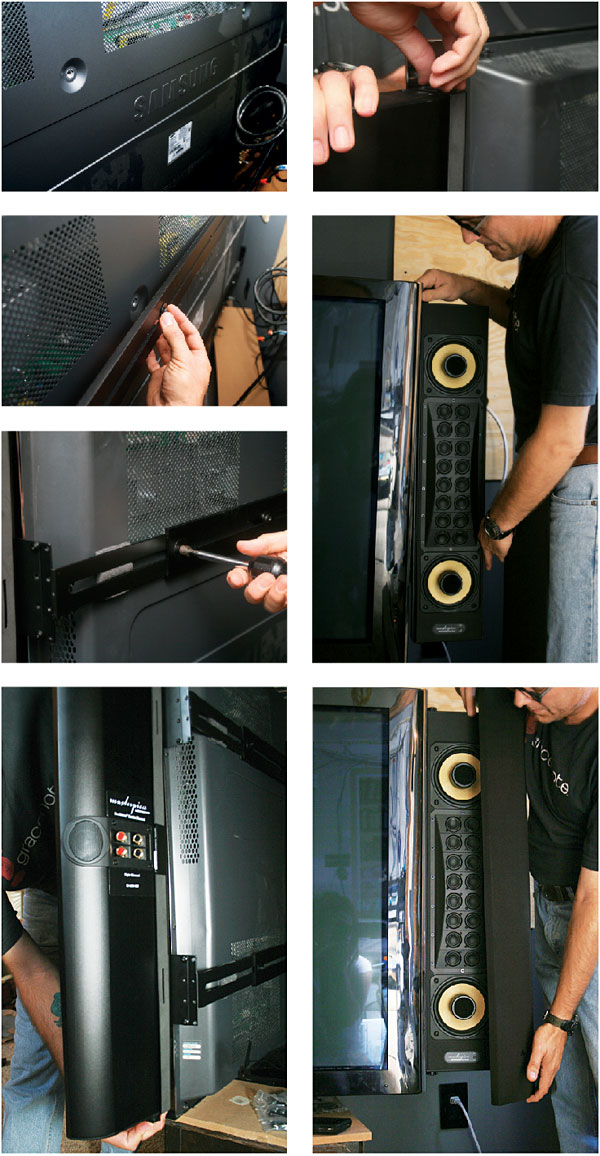
Time for the Main Attraction
Movies, of course, are really what the LCR-DMs are all about, and they were as spectacular at providing a seamless LCR experience as they were at blending in with the TV. In Megamind, during an early conversation between Roxanne and Megamind (posing as Bernard), the voices are locked dead center on the screen. There’s not even a hint that something’s missing—in fact, dialogue seemed more intelligible, and action across the screen was more seamless than with most traditional three-cabinet LCR setups I’ve heard. As for the LRS surrounds, when Megamind orders that the Black Mamba be brought out, the mindbots swarm from the rear to the front smoothly. And the RCC 600-FS subwoofers absolutely shook the room as the Titan’s footsteps come crushing down on the street amidst the parked cars. As a complete package, I’d once again call it detailed and immediate—much the same as the experience you’d get watching a movie in a really good, small-venue theater. I liked it a lot. With the Stage Tweeters turned on, the front soundstage widened and extended more toward the surrounds in a way that tended to emphasize the surround effects and give the perception of a larger theater. However, every now and then, with certain types of sounds, such as the background high-pitched twittering of the crowd in the galleries during the echo game in House of Flying Daggers, there was an unpleasant brittleness. Again, this softened somewhat when I moved the TV closer to the front wall (from 21 inches into the room down to 13 inches)—but that wouldn’t be the natural placement for the set on a cabinet in my home theater. I preferred the sound with the Stage Tweeters turned off, but once again, room acoustics might have a dramatic effect on how the Stage Tweeters perform in a different home theater.
While it was clear that the DualMono design of the LCRDMs worked phenomenally well in my situation, I decided to see how they would compare with an actual discrete-cabinet center channel wired in. Because I didn’t have an Artison center channel handy, I used a Definitive Technology Mythos Three placed where most people would put it—on the cabinet below the TV. The LCR-DM’s impedance and output level change when you configure it as two speakers rather than three, so I had to readjust the speakers’ relative volume levels in the system each time I took the Def Tech in or out of the system.
The Mythos Three did an admirable job of keeping up with the Artisons, and the trio would have made a respectable LCR—except for the fact that, after hearing the dialogue come straight out of the screen with the LCR-DM in DualMono mode during a dialogue-heavy movie like A Scanner Darkly, it was undeniable that the centerchannel information was coming from slightly below the center point with the Def Tech. And it was undeniably a better experience to hear it come from dead center of the screen with the Artisons. Unfortunately, though, that’s pretty much the way it is with 98.7 percent (give or take a tenth or two of a percent) of the home theaters out there. Unless you own a front-projection setup with an acoustically transparent screen, your center channel is going to go below or above the TV.
On the final day of my listening tests, I (accidentally) succeeded in bottoming out the lower midbass driver in the left LCR-DM while watching an especially bombastic drumbeat in the previously mentioned echo scene in House of Flying Daggers. Sure, I was listening at a fairly loud volume level, but not uncomfortably so. (I tried the scene with the channels reversed to make sure it wasn’t simply a bad driver.) After I progressively raised the crossover point from the initially recommended 80 Hz to 150 Hz, I could play the LCR-DMs about as loud as I could stand without any straining in the bass drivers on this scene. Since the RCC 600-FS woofer modules were both located on the front wall, the much higher crossover point had minimal effect on the blending of the subs and the LCR-DMs. But the experience showed the main speaker’s limitations with some demanding material.
Hang ’Em High
Whether it’s the purist or the incurable tech-lust in me, the Artison Masterpiece LCR-DM system wouldn’t be my particular first choice if I had $6,000 to spend on a home theater speaker system. But that’s because I’m not driven by the desire to hide the speakers from view. (I’d probably leave the grilles off just to see the drivers.) On the other hand, provided you play the Masterpiece LCR-DM system within its fairly wide limits, there’s no real sonic penalty (as there often is) for beauty and style—and, in this case, invisibility. This is a masterfully crafted system that not only performs as well as other similarly priced but less attractive systems, it actually outperforms more expensive systems when it comes to placement and clarity of dialogue in the center channel. Personally, I preferred the system’s smaller, more intimate theater feel without the Stage Tweeters engaged, but it’s a bonus that the system can sound bigger if that’s what you prefer and have a room that acoustically accommodates it better than my own. Somehow Christie and the Artison folks have brought together the two opposing concepts of enjoying high-performance home theater sound in an integrated, space-saving package, while ensuring that the TV still looks like a regular TV. For some, that’s a match made in heaven.
